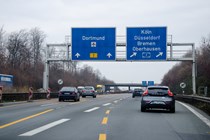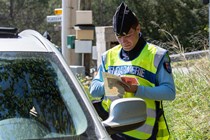Thousands of British people find themselves driving in Europe every year, particularly during the summer months. You might be travelling there by plane and hiring a car, or using a ferry or Eurotunnel to take your own car. Either way, it’s vital to make sure you know the rules of the road in the countries you’ll be visiting or just driving through. Here, you’ll find all the driving advice you need to stay on the right side of the law.
There are some general principles that apply to driving in the vast majority of European countries – driving on the right-hand side of the road, for instance. But each country has its own quirks that can easily catch you out, so multi-country road trips need quite a bit of research beforehand.
Here, we’re going to go over the main principles of driving in Europe generally, and driving your own car on the Continent. We’ll also cover some of the things you can expect to come across on the road and what documents and equipment you should have in the car.
GB and UK stickers for driving in Europe
Post-Brexit, GB stickers and number plate badges are no longer valid as ‘country identifiers’ for cars travelling from the UK to Europe. Since 28 September 2021, only UK stickers and number plate badges are valid. There must be at least one UK identifier affixed to the rear of your car whilst driving in Europe.

Rules of the road in Europe
Every country in mainland Europe drives on the right-hand side of the road and overtakes on the left. On dual carriageways and motorways, the right-hand lane is the ‘slow’ lane, and the left-hand lane is the ‘fast’ lane. In most countries, you can pass slow-moving motorway traffic on either side.
At junctions and roundabouts, traffic coming from the left has priority, unless signage indicates otherwise. The shape, colour and symbols used on signage varies from country to country as, of course, do the languages.
It’s usually pretty obvious what signs mean, but it can be helpful to do some research before travelling to help you understand the signs in the countries you’re visiting. Or have a passenger with Google Translate at the ready.
The minimum driving age in many countries is 18, even if you’re able to drive at a younger age in your home country.
Distances are given kilometres and speed limits in kilometres per hour (km/h). The urban speed limit in most countries is 50km/h (31mph) and the motorway limit is usually 130km/h (81mph). Some countries – France in particular – impose lower limits in wet weather. The speed limit on all types of road is usually very well signposted.
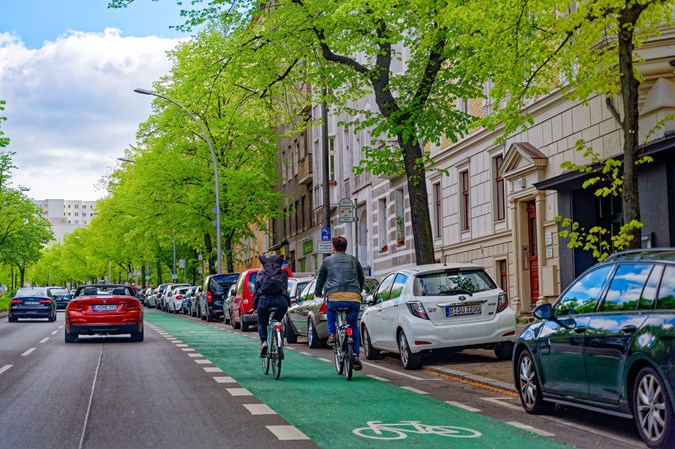
Speeding fines in Europe
The police in certain countries used to have a reputation for ignoring – even encouraging – speeding drivers, but that’s no longer the case. Speed limits are rigorously enforced by patrols and cameras.
The level of speeding that incurs a fine and how much they are is different in every country. Fines for minor offences can be as low as £20 and as much as £640. But those are just the ‘standard’ rates.
Speeding fines in Finland and Switzerland are linked to the driver’s income and are essentially unlimited. And, in France, particularly egregious offences can result in the police confiscating your driving license, leaving you unable to drive.
Converting km/h to mph
European speed limits are given in kilometres per hour. One mile equates to 1.6 kilometres, so it’s not an easy conversion. Here’s a quick guide:
- 10km/h = 6mph
- 20km/h = 12mph
- 30km/h = 18mph
- 40km/h = 24mph
- 50km/h = 31mph
- 60km/h = 37mph
- 70km/h = 43mph
- 80km/h = 49mph
- 90km/h = 56mph
- 100km/h = 62mph
- 110km/h = 68mph
- 120km/h = 74mph
- 130km/h = 81mph
Analogue speedos have a km/h scale to go by. Digital speedos can be switched to show km/h if you dive in the settings menus. It’s sometimes hidden into the satnav settings, where there’s the option to display distances in kilometres.

Car insurance for driving in Europe
Before you head off to Europe in your own car, you need to go through your car insurance policy to make sure you’re covered for the duration of your trip, and what level of cover is provided.
The vast majority of UK insurers provide European cover as standard with third party, fire and theft and fully comprehensive cover. However, your policy may only provide third party cover on the Continent. If so, it’s advisable to upgrade the level of coverage just in case.
Similarly, most UK insurers allow for up to 90 days of European motoring but, in some cases, it can be as little as three days. Again, you should be able to add extra days to your policy if needed.
If you’re unfortunate enough to get into an accident, remember to take as many notes and photos at the scene as possible. Don’t forget to take the details of the other parties involved, as well – use Google Translate to communicate if necessary.
Breakdown cover for driving in Europe
A breakdown is a big enough inconvenience in the UK and orders of magnitude more so when you’re a thousand miles and a stretch of water from home. Taking it upon yourself to get a broken car home from Europe can be an enormous hassle and cost thousands of pounds, so it’s best to have breakdown cover for your journey.
Most breakdown services include European coverage as standard with their top-grade packages, and you can add it to other plans at extra cost. You can also buy coverage for the duration of your trip if you’re not already a member.
UK breakdown services work with local recovery companies and garages to get your car repaired. If it can’t be fixed, your car will be repatriated back to the UK. You may have to pay an excess charge – check your policy.
Note that some European countries have particular rules about what to do if you suffer a breakdown. For instance, if you breakdown down on a French Autoroute, you must use the orange emergency telephones rather than your mobile. Before leaving your vehicle, put on a high-viz vest and set up a warning triangle about 100 metres behind your car.
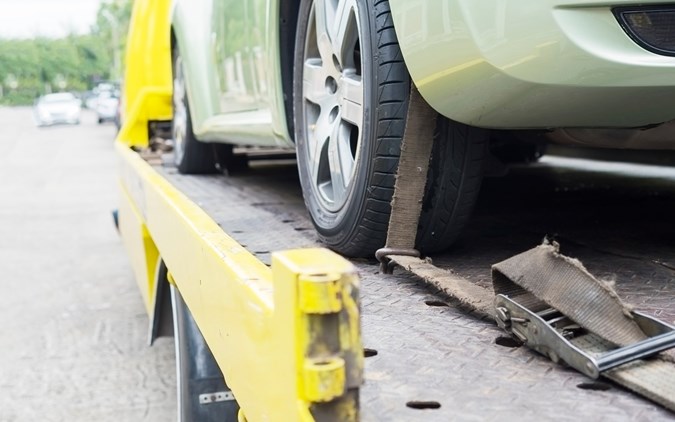
International Driving Permits in Europe
When the terms of the UK’s exit from the EU were still unclear, many people took out an International Driving Permit (IDP) in case UK driving licenses wouldn’t be recognised in Europe. But that didn’t come to pass and all 27 EU member states recognise the validity of UK licenses, as do Switzerland, Norway, Iceland and Liechtenstein.
Not that there’s anything stopping you getting an IDP – they are required in many countries around the after all. You used to be able to one from Post Office branches, but that arrangement ended in 2024. Now, you can get one from certain shops with a PayPoint machine, at a cost of £5.50. You must have your UK driving license on you to drive throughout Europe, regardless of whether you also have an IDP. If you still have an old-style license, take the paper counterpart as well.
You can find a full list of countries you need an IDP for on the Government’s website. The PayPoint website has a location finder for buying one.
Headlight deflectors for driving in Europe
The headlights on UK cars are set up for driving on the left. Thus, when driving in Europe on the right hand side of the road, the headlights are pointing in the wrong direction and can dazzle oncoming drivers.
To solve the problem, you should buy a set of headlight deflectors, stickers that you affix to a certain area of the headlight cover – the instructions will advise exactly where.
If your car has cornering or adaptive headlights, there should be the option switch their orientation for driving on the left somewhere in the settings menus, negating the need for deflectors. It’s an offence to drive a UK car at night in Europe with headlights pointing in the wrong orientation.
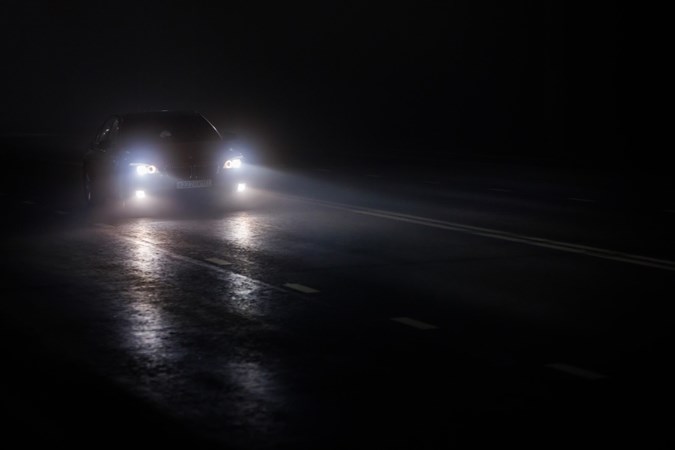
Drink driving in Europe
It goes without saying that you should never get behind the wheel after consuming any amount of alcohol. But there are times when last night’s tipple hasn’t cleared your system by the time you need to get in your car the next morning, a situation complicated the fact that how long you have to wait to drive after drinking varies from person to person.
You need to be particularly careful about it when driving in Europe because many countries have lower drink driving limits than the UK. The limit in England, Wales and Northern Ireland is 0.08%, or 80 milligrams of alcohol per 100 millilitres of blood.
By contrast, the limit in much of Europe – including France and Germany (and Scotland, for that matter) – is 0.05%, or 50 milligrams of alcohol per 100 millilitres of blood. To help you avoid getting caught out, certain countries require that you have two personal breathalysers in your car at all times. The fines can be hefty if you’re caught exceeding the limit.
Penalties and on-the-spot fines when driving in Europe
Post-Brexit, the UK remains part of Europe’s Cross-Border Enforcement structure and European police forces are able to obtain your license details if you’re caught committing an offence on the road.
Penalties for offences vary from country to country but can include fines and license points. In France, some police authorities have the power to collect an on-the-spot fine of €750 (£630). Some countries have several police forces that can stop you on the road, for instance France’s customs police.

Speed camera detectors when driving in Europe
Speed camera detection equipment is illegal across much of Europe. That includes standalone detectors and satnavs and navigation apps that warn of speed camera locations. The fine for having a detector in your car can be as much as €1,500 (£1,250), even if it’s turned off. The device can also be confiscated – including your phone.
If you have a standalone detector, it’s best just to leave it at home. Turn speed camera location warnings off on your satnav or navigation app.
What safety kit should I have in my car for driving in Europe?
Most European countries require that you have a lengthy list of documents and equipment in your car that aren’t necessarily needed in the UK. They include:
- Full, valid UK driving licence
- Proof of insurance
- Proof of I.D. (i.e. a passport or national identity card)
- V5C registration document (or a VE103 document for rented vehicles)
- High-visibility jackets for all vehicle occupants
- Warning triangle
There are other requirements particular to certain countries, as well. For instance, in Spain you should have a spare pair of glasses if you require them for driving. In France and Germany, you need to have at least two personal breathalysers in the car. In Germany, you need a first aid kit. A spare bulb kit may be necessary, as well.
You can buy all these items individually or get a European travel kit that contains some or all of them. The police can issue fines if you don’t have the right things in your car.
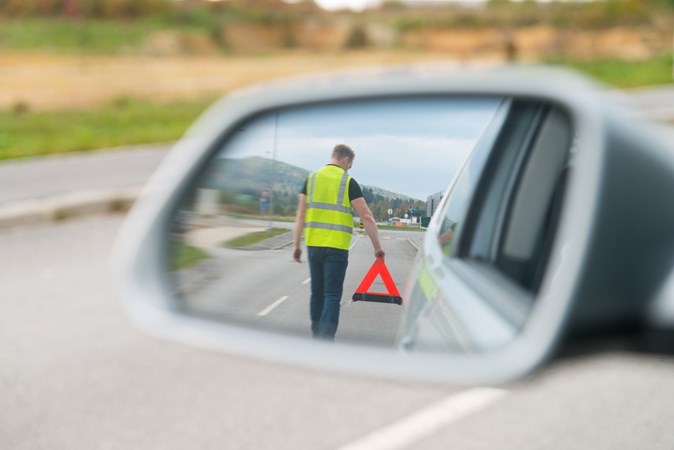
Emergency numbers in Europe
You can dial 112 from anywhere in Europe and an operator will connect you to the correct emergency service for the country you’re in. Operators speak multiple languages, so you’ll be able to communicate in English. If your car has an SOS call button, it should work in most European countries.
Low emissions zones in Europe
More than 180 cities in 10 European countries have low emissions or clean air zones similar to the London ULEZ. Most of those zones are locally administered and so what cars they allow varies.
As a rule of thumb, if you have an electric car or a petrol/hybrid car that meets Euro 6 emissions standards, you’re welcome to drive anywhere. But there are restrictions on older petrol cars and all diesels. If you’re planning on driving into any cities during your trip abroad, it’s best to do some research beforehand.
Some countries have a system of stickers that show which emissions standard your car meets. They include France’s CRIT’air and Germany’s Umwelt zone schemes. You must have the appropriate sticker for your car displayed in the windscreen to drive into a clean air zone. Fortunately, they’re very easy to apply for and only cost a few euros, so you may as well get one even you’re not sure you’ll need it. Allow up to six weeks for delivery.
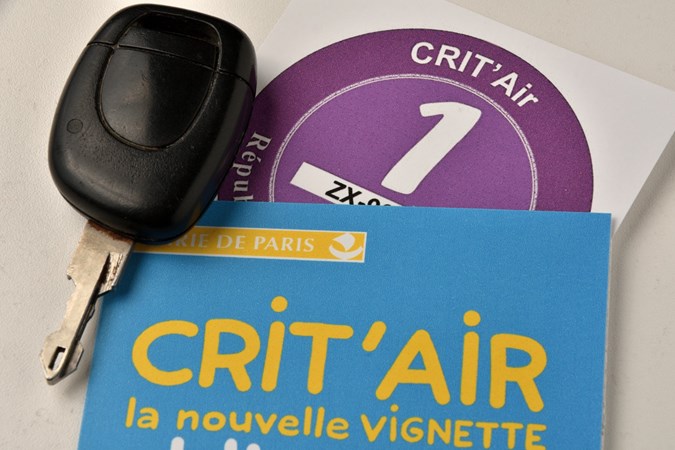
Motorway tolls in Europe
France, Italy, Spain and Portugal operate a system of tolled motorways – there are non-toll motorways, as well. You’re charged on a pay-as-you-go basis at toll stations sited periodically along such roads, and at entry and exit points.
Tolls stations have many lanes to choose from; signs above each lane show which payment methods are accepted. You can pay by cash, card or Liber-t electronic tag. The tag is a small box that you attach to the top left corner of your car’s windscreen. As you approach a toll station barrier, sensors detect the tag, automatically open the barrier and charge the toll to your credit or debit card.
Liber-t tags are available to order online on a subscription basis and are available to UK residents. Several payment plans are available and you’re billed for the toll charges you’ve accumulate at the end of each month. They’re by far the most cost effective way of paying the tolls.
A tag also allows you to pass through a toll station without stopping, which can translate to a sizeable time saving on long journeys. And t can save you a lot in credit/debit card charges.
Rather awkwardly, toll payment machines and manned booths are on the left-hand side of toll station lanes. If you’re driving solo in a UK car, it’s best to get out rather than lean across. The barrier opens when payment is accepted and won’t close until you’ve driven through.
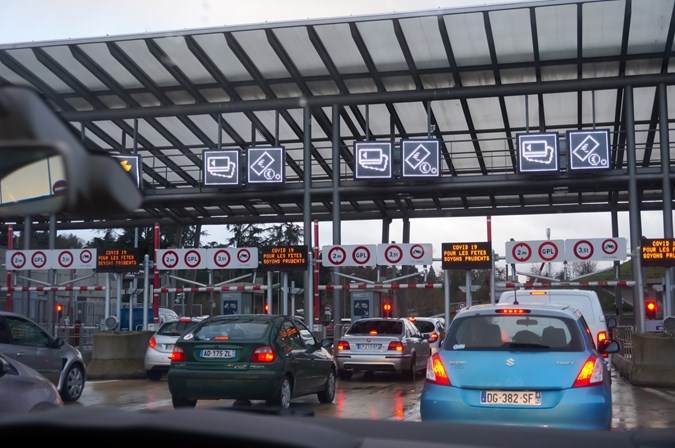
Vignettes for driving in Europe
Vignettes are a system of tax road used in Austria, Switzerland, Bulgaria, Czechia, Hungary, Romania, Slovakia and Slovenia. A vignette allows you to drive your car on the roads of those countries for a certain amount of time. It takes the form of a sticker that attaches to your car’s windscreen. Failure to display a vignette is a fineable offence.
You can apply for a vignette online before you travel or buy one from designated retailers such as petrol stations and post offices.
Towing in Europe
If you’re taking a trailer or caravan to Europe, you need to make sure your rig complies with the regulations in every country you’re passing through. The UK’s dimensions regulations also apply across the EU. Rigs can be a maximum of:
- 18.75 metres long
- 2.55 metres wide
- 4.00 metres tall
In some countries such as Spain, rigs more than 12 metres long must have large reflectors on the back of the trailer.
Across most of Europe, the speed limit while towing is 80km/h (49mph). There are a lot of variations between countries, though, so make sure you do your research before travelling.
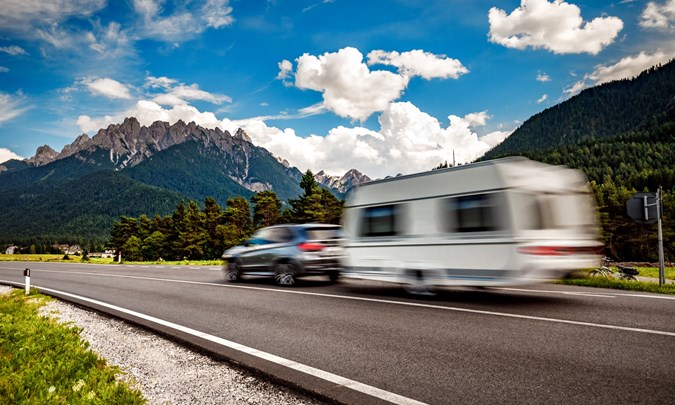
Driving modified cars in Europe
The UK has rather loose rules on how cars can be modified, but they’re much stricter in Europe. Indeed, many of the UK’s modified cars would be completely illegal across much of the Continent.
But driving a modified car from the UK to Europe is permissible, so long as it has a valid MOT – take the certificate with you as proof. However, the authorities in some countries, particularly Germany, are known to force foreign modified cars off the road if they don’t meet local roadworthiness standards.
If that happens to you, your car will have to pass the local equivalent of an MOT test before it’s allowed back on the road. If it fails, you’ll have to get it ‘repaired’ to the relevant standards, or else have it recovered home – all at your own expense. Groups of modified cars are more likely to attract police attention than those travelling alone. Routes to the Nurburgring and Spa race circuits, which are very popular for track days, are well policed.
We have comprehensive guides to driving in a number of European countries:
Driving in France: everything you need to know
Driving in Germany: everything you need to know
Driving in Italy: everything you need to know
Driving in Spain: everything you need to know
Take our Driving Abroad Quiz!
How much do you think you know about driving in Europe? Take our fun quiz to find out!
Just so you know, we may receive a commission or other compensation from the links on this website - read why you should trust us.




